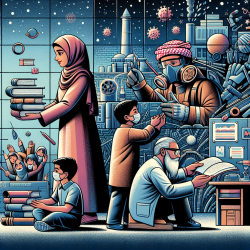Introduction
The prevalence of child labor is a global concern, and its impact on the health and safety of schoolchildren is profound. The research article "Labor and Related Injuries among Schoolchildren in Palestine: Findings from the National Study of Palestinian Schoolchildren (HBSC-WBG2006)" sheds light on this critical issue. The study reveals alarming statistics about work-related injuries among Palestinian schoolchildren, highlighting the need for targeted interventions.
Key Findings
The study surveyed 15,963 Palestinian schoolchildren aged 12-18, with a focus on those engaged in labor. Approximately 73.8% of these children reported working in the past year, and 79.1% of them sustained work-related injuries. The injuries were more prevalent among boys, younger children, and those attending UNRWA schools in Gaza Strip. The type of work significantly influenced the nature of injuries, with retail trade, agriculture, and cleaning being the most common sectors.
Implications for Practitioners
For practitioners in speech-language pathology and related fields, understanding the sociodemographic factors that contribute to these injuries is crucial. By integrating this knowledge into practice, professionals can better advocate for and implement safety measures and educational programs tailored to these vulnerable populations. Here are some actionable steps:
- Develop educational programs that raise awareness about occupational hazards among children, parents, and employers.
- Advocate for policies that enforce stricter regulations on child labor and ensure safe working conditions.
- Collaborate with schools to integrate safety training into the curriculum, emphasizing the importance of protective equipment and safe work practices.
- Encourage further research to explore the psychological and developmental impacts of work-related injuries on children.
Encouraging Further Research
While the study provides valuable insights, it also highlights the need for further research. Practitioners should be encouraged to delve deeper into the factors that contribute to the high prevalence of injuries. Understanding the long-term effects of these injuries on children's development and education is essential for creating comprehensive intervention strategies.
Conclusion
The findings from the study underscore the severity of work-related injuries among Palestinian schoolchildren. As practitioners, it is our responsibility to advocate for safer work environments and to educate children and their families about the risks associated with child labor. By doing so, we can contribute to reducing the incidence of these injuries and improving the overall well-being of children.
To read the original research paper, please follow this link: Labor and Related Injuries among Schoolchildren in Palestine: Findings from the National Study of Palestinian Schoolchildren (HBSC-WBG2006).










